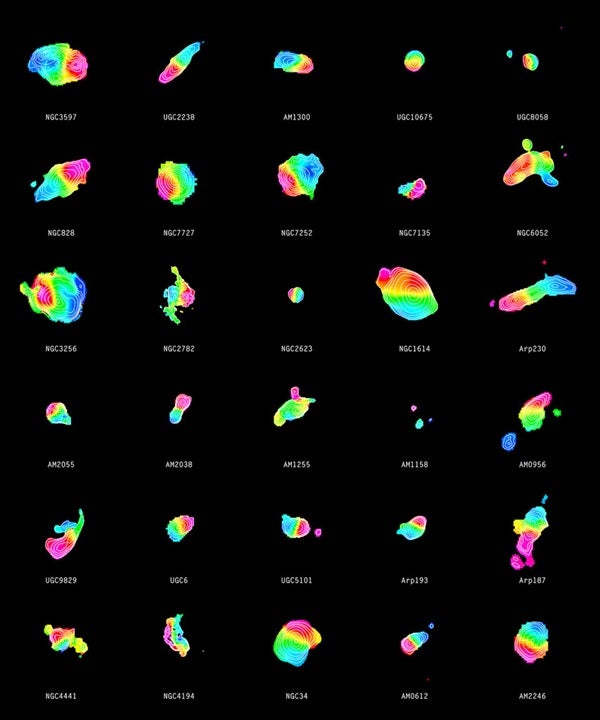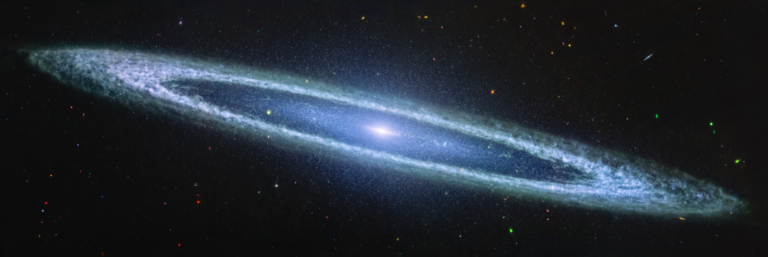An international research group led by Junko Ueda from the Japan Society for the Promotion of Science has made surprising observations that most galaxy collisions in the nearby universe — within 40–600 million light-years from Earth — result in so-called disk galaxies. Disk galaxies, including spiral galaxies like the Milky Way and lenticular galaxies, are defined by pancake-shaped regions of dust and gas and are distinct from the category of elliptical galaxies.
It has, for some time, been widely accepted that merging disk galaxies would eventually form an elliptically shaped galaxy. During these violent interactions, the galaxies not only gain mass as they merge or cannibalize each other, but they also are changing their shape throughout cosmic time, and therefore changing type along the way.
Computer simulations from the 1970s predicted that mergers between two comparable disk galaxies would result in an elliptical galaxy. The simulations predict that most galaxies today are elliptical, clashing with observations that over 70 percent of galaxies are in fact disk galaxies. However, more recent simulations have suggested that collisions could also form disk galaxies.
To identify the final shapes of galaxies after mergers observationally, the group studied the distribution of gas in 37 galaxies that are in their final stages of merging. The Atacama Large Millimeter/submillimeter Array and several other radio telescopes were used to observe emission from carbon monoxide, an indicator of molecular gas.
The team’s research is the largest study of molecular gas in galaxies to date and provides unique insight into how the Milky Way might have formed. Their study revealed that almost all of the mergers show pancake-shaped areas of molecular gas, and hence are disk galaxies in the making. “For the first time, there is observational evidence for merging galaxies that could result in disk galaxies,” said Ueda. “This is a large and unexpected step towards understanding the mystery of the birth of disk galaxies.”
Nonetheless, there is a lot more to discover. “We have to start focusing on the formation of stars in these gas disks,” Ueda said. “Furthermore, we need to look farther out in the more distant universe. We know that the majority of galaxies in the more distant universe also have disks. We however do not yet know whether galaxy mergers are also responsible for these or whether they are formed by cold gas gradually falling into the galaxy. Maybe we have found a general mechanism that applies throughout the history of the universe.”
The movie shows the collision of two disk galaxies, but the actual shape of galaxies prior to the collision in this study is not known.
Credit: NAOJ










